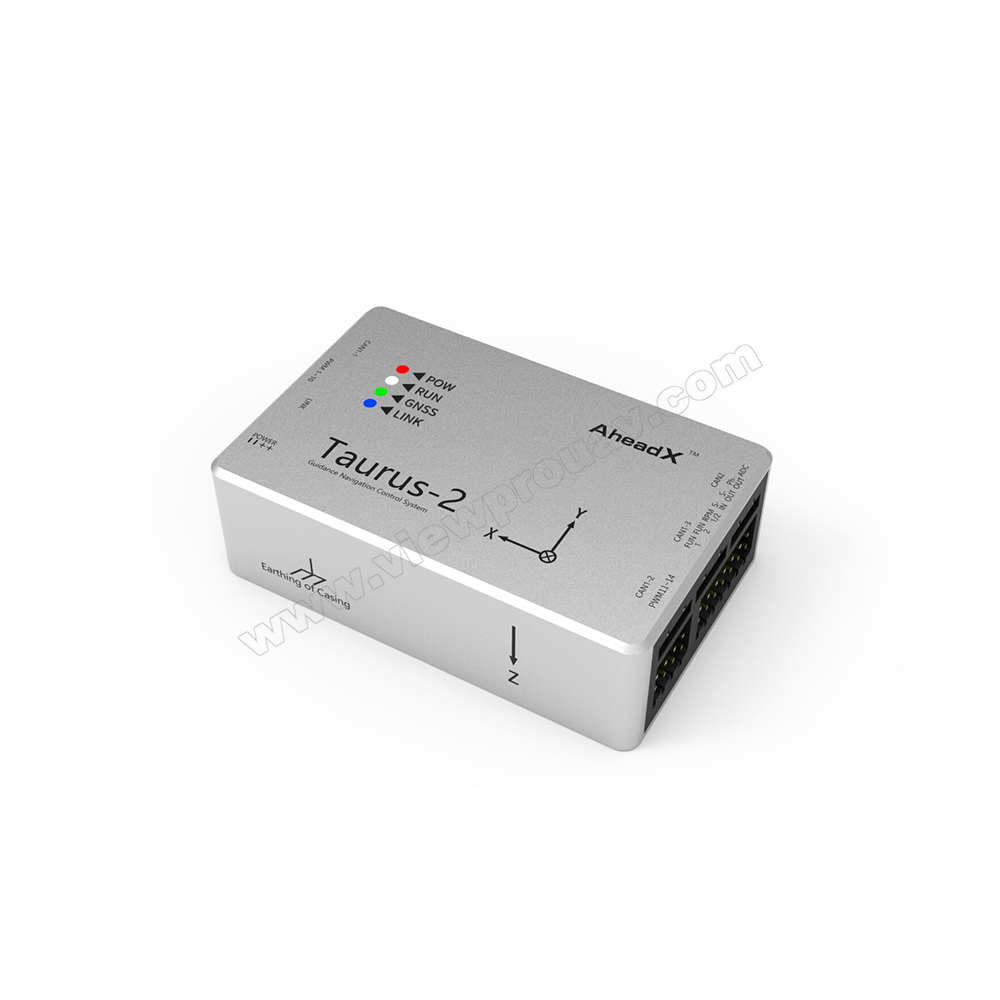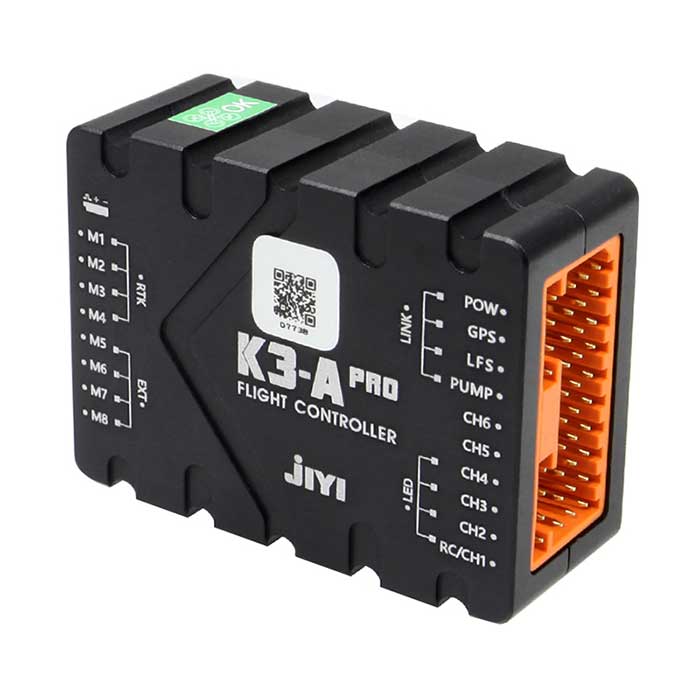Reliable Drone Navigating with SparkNavi Drone Flight Controller and GNSS/INS Made in Taiwan
Reliable Drone Navigating with SparkNavi Drone Flight Controller and GNSS/INS Made in Taiwan
Blog Article
Discovering the Role of Drone Flight Controllers in Enhancing Trip Stability and Navigation Performance
The development of drone modern technology has actually substantially enhanced the relevance of trip controllers, which work as the brain of these aerial lorries. By incorporating real-time data from a selection of sensing units, flight controllers improve trip security and navigating efficiency, ensuring that drones can operate efficiently also in complex environments. This conversation will certainly explore the vital components that contribute to these enhancements, as well as the implications for the future of independent flight. What advancements exist ahead that could further change the abilities of drone trip controllers?

Recognizing Flight Controllers
Flight controllers are indispensable components in the functioning of drones, serving as the brains that stabilize and handle flight operations. These advanced tools procedure data from numerous sensors, consisting of accelerometers, gyroscopes, and GPS, to ensure that the drone preserves its desired trip path. The flight controller analyzes this information and implements commands based upon pre-defined algorithms, making it possible for the drone to reply to ecological changes, such as wind or barriers.
The key feature of a trip controller is to preserve stability during flight. It accomplishes this by making real-time changes to the drone's electric motors and control surfaces, making certain equilibrium and control. In addition, modern trip controllers integrate innovative features such as waypoint navigation, permitting automated trip paths and boosted operational effectiveness.
Understanding the architecture of flight controllers is essential for both experts and hobbyists. They normally include a microcontroller, firmware, and various user interfaces for sensing unit input and interaction. As innovation developments, trip controllers have ended up being much more capable and small, incorporating artificial intelligence to adjust and boost decision-making processes to complex flight scenarios. This development represents a pivotal development in the drone industry, leading the way for a lot more innovative applications and safer operations.
Trick Components of Trip Security
Accomplishing optimal flight security in drones counts on a number of vital elements that function in performance to guarantee regulated and smooth operations. Central to this stability is the flight controller itself, which processes information from different sensing units to preserve the wanted trip mindset. This includes accelerometers and gyroscopes that measure activity and positioning, enabling real-time adjustments to the drone's position.
One more critical element is the electronic rate controllers (ESCs), which control the power delivered to the motors. By carefully adjusting electric motor speeds in feedback to trip controller commands, ESCs assist maintain balance and counteract disturbances caused by wind or unexpected movements.
Additionally, the design of the drone's frame plays a crucial function in flight stability. A well-structured frame lessens resonances and enhances the general wind resistant profile, adding to smoother trip features. Finally, the combination of sophisticated algorithms within the flight controller aids in predictive changes, ensuring a versatile and receptive flight experience.
With each other, these parts form a cohesive system that enhances a drone's security, permitting exact maneuvering and boosted performance in numerous flight problems.
Navigation Efficiency Strategies
Efficiency in navigating is important for maximizing drone procedures, particularly in complex atmospheres. Effective navigation strategies enhance the ability of drones to pass through tough surfaces and stay clear of obstacles, thereby boosting functional efficiency and security.
One popular technique is the application of innovative general practitioners and inertial measurement devices (IMUs) that supply accurate area tracking and alignment data. These innovations allow drones to calculate ideal flight courses in real-time, taking into account numerous elements such as wind problems and prospective barriers.
An additional strategy involves the use of algorithms for path planning and optimization. Algorithms such as A * and Dijkstra's formula can be released to establish one of the most effective course while decreasing power intake and flight time. In addition, incorporating artificial intelligence designs can allow drones to adaptively pick up from their atmospheres, boosting navigating abilities via experience.

Influence On Autonomous Drones
The combination of advanced navigation methods has exceptionally changed the capabilities of autonomous drones, allowing them to run with greater autonomy and precision. SparkNavi drone flight controller and GNSS/INS made in taiwan. These enhancements are mostly attributed to advanced flight controllers that make use of real-time data processing and sensing unit combination, enabling drones to navigate complex atmospheres seamlessly
The effect on autonomous drones prolongs past mere navigating; it includes improved obstacle avoidance, enhanced security throughout vibrant conditions, and increased goal reliability. By leveraging algorithms that integrate device discovering and fabricated knowledge, drones can adapt to altering scenarios, making notified choices that optimize their flight paths while decreasing risks.
Additionally, the application of durable trip controllers has actually helped with the execution of complicated jobs, such as aerial assessments, delivery solutions, and farming monitoring, with very little human treatment. This ability not just enhances operations yet likewise decreases human mistake, consequently boosting overall safety and security.
Because of this, the operational range of independent drones has actually increased substantially, making them important tools in various markets. Their ability to perform successfully in varied circumstances highlights the important duty that progressed flight controllers play fit the future of unmanned airborne systems.
Future Trends in Flight Control
Often, improvements in trip control technology are positioned to redefine the landscape of drone procedures in the coming years. Arising patterns show a significant shift in click now the direction of boosted fabricated intelligence (AI) combination, enabling flight controllers to refine real-time data much more more effectively. This development will assist in improved decision-making capabilities, allowing drones to adjust to vibrant ecological conditions autonomously.
In addition, the application of artificial intelligence formulas is expected to enhance anticipating maintenance, consequently reducing downtime and expanding the lifecycle of drone components. This proactive method to maintenance will certainly be critical as drone applications increase throughout various sectors, from agriculture to logistics.

.jpg)
Finally, innovations in protected interaction methods will certainly attend to safety and regulatory issues, ensuring that drones can operate flawlessly in congested airspaces (SparkNavi drone flight controller and GNSS/INS made in taiwan). Collectively, these patterns direct in the direction of a future where flight control systems are not just smarter and more effective but likewise qualified of operating securely in an increasingly integrated airspace
Verdict
Finally, drone flight controllers are integral to improving flight stability and navigating performance with the innovative handling of sensor data. By keeping ideal trip attitudes and utilizing innovative formulas for course optimization and obstacle avoidance, these controllers significantly add to the autonomy and operational security of drones. As innovation continues to advance, further developments in flight control systems are expected, guaranteeing improved performance and broadened capacities in the world of unmanned aerial vehicles.
By incorporating real-time information from a range of sensors, flight controllers improve trip stability and navigation efficiency, guaranteeing that drones can operate efficiently also in intricate environments.Trip controllers are indispensable parts in the performance of drones, serving as the minds that stabilize and handle trip procedures. Additionally, modern-day trip controllers include innovative attributes such as waypoint navigation, enabling for automated flight paths and enhanced functional effectiveness.
Central to this security is the flight controller itself, which processes data from various sensors to keep the desired flight attitude.In conclusion, drone flight controllers are integral to enhancing flight security and navigation performance with the innovative processing of sensor data.
Report this page